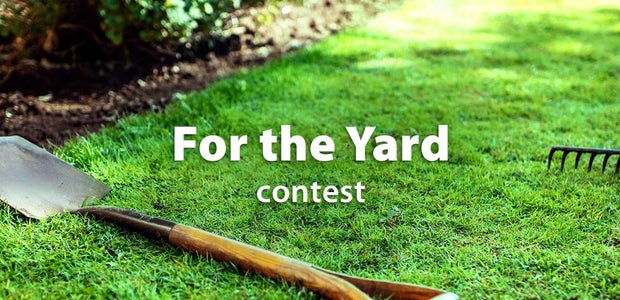Introduction: Rice Castle Ruins
I love castles, and ruined castles really inspire the imagination. I also love pretty much everything about Ireland. So obviously I had to build an Irish castle. So I present to you, Ballycarbery castle, in rice!
Supplies
Jasmine rice
Regular rice
Cardboard
Food Coloring/India Ink
Elmer's Glue
Glue gun and sticks
Food Processor
Paint Brushes
Scissors
Exacto
Step 1: Reference Pictures
Gotta have good pictures of what you're building, right? I found many different pictures from many sites, and screenshotted videos so that I could get the layout of the castle as best as I could.
Step 2: Rough Construction
Based on my reference pictures, I started constructing the castle using cardboard and a glue gun. I picked a measurement to start with, then proceeded onwards, guessing the dimensions based on what looked right. I began with the tallest tower, using a 1-inch width, then approximated how high each castle floor would be, ending up with 2 1/2 inches for each level.
With those base dimensions, I fiddled away, using my glue gun and cardboard scraps to build as I went.
Step 3: Cutting the Final Pieces
With my rough cardboard model built, I had the measurements for the final product. I measured each piece, carefully matched the dimensions, then cut them out in new cardboard. For some pieces, I pried off bits of my model and traced the strange edges.
To hide the brown of the cardboard, I glued each piece to rough, white drawing paper using Elmer's glue. Once dry, I used an Exacto blade to get a clean cut. If both sides of the piece of cardboard were going to show in the final product, I also did the paper technique for the other side.
I then filled the cardboard side slivers with spackle, wherever I thought it was needed, to help hide gaps.
I roughly colored in where the rice stones would be with a gray marker, which helped with overall shading and potential gaps.
Step 4: Rice Stones
To color the rice, I took a mix of jasmine rice and regular white rice, dumped it all in a bag, and dripped a small amount of watered-down black India Ink into it. Be careful not to put too much liquid! Definitely don't want the rice to oversaturate. Go slow.
Then, squish! Squish it all up until it's evenly coated and in the desired shade. I did this with a few different bags, wanting to get a varied mix of grays and blacks for the stonework.
When the rice was the desired color, I dumped it onto a paper plate and spread it out to dry. At this point, it should be a little clumpy and very lightly damp, and it shouldn't take more than a few minutes for it to completely dry.
I also ground up a small portion (by hand, but quicker with the food processor) to use for paths.
Step 5: Moss Rice
The green rice went a little differently. I dumped a few cups of rice into the food processor and ground it down into pieces. Then I added green food coloring, using the same bag method as with the stone rice, and let it dry.
Once dry, I ground it up again in the food processor. After the initial color-dying stage, the rice is a little more brittle than before, and it grinds up far easier in the second round. It needs more color after this, so I did the bag and color step again.
In the end, this rice was very much like coarse, green sand.
Step 6: Stonework
And so begins the long and arduous process of layering all those rice grains onto the cut-out cardboard pieces. Honestly, it started out as satisfying and relaxing, but then it was just a LOT OF TEDIOUS RICE. I super liked the effect though.
I carefully applied the Nori Paste, which is a rice glue, to the very bottom of where each stonework piece began and started lining up the rice side by side. I did this line by line, layering it like a brick wall. The jasmine rice gave nice quick even lines, but the regular rice worked to fill in any shorter spots on the edges and in between. I also used broken rice pieces to fill in any little holes that popped up, like one would with a real stone wall.
When it came to the big archways, I arced only jasmine rice around the opening, to give a different stonework effect.
For the flooring, which was mostly moss/vines, I had a different process. I marked out where the walking paths were and used the ground up gray rice for the paths.
Little bits of the castle needed rice coverage, like the top and windows. I used my best judgment to figure out how to lay the rice so that it looked natural, and just went with that.
Step 7: Gluing the Walls Together
Hot glue time! Using the rough draft cardboard castle as a reference, I glued my rice walls together, one at a time, fitting them together from the outside in. For the main back wall, I glued in the spacers first, just for sake of ease. In some cases, the rice overlapped where something needed to be fitted, so I carefully shaved it down with the exact. But glue glue glue! This is the easy part.
Step 8: Moss
This step is pretty much like decorating with glitter. Wherever there is moss, slap down some glue then douse it with the green rice crumbles. I used Elmer's glue for this, as it held thicker clumps than the Nori paste.
Let dry, then use a paintbrush and brush glue on top of the moss spots, wherever it needs more rice, and add rice. This is a rinse-and-repeat thing, where you add more rice depending on what looks good, what is lacking, what needs more, etc.
Step 9: The End!
Touch-ups! Adjustments! Oops, I missed something! That's what this step is. Basically, I went back and fixed whatever needed fixing.
As a side note, there is a wall around Ballycarbery castle, but I opted not to make it and to just focus on the castle itself.
And in the end, I finally had a castle!
Thanks for reading!

Grand Prize in the
Rice & Grains Challenge













6 Comments
5 months ago on Step 9
Whoah! What details, such tedious work. So cool!
5 months ago
Outstanding work. My hat is off to you!
5 months ago
I love crafts like this. Great idea.
Reply 5 months ago
Thanks so much!
5 months ago
This looks like a very tedious process (lol, something I tend to enjoy, if it’s craft-related), but the end result is amazing. Thank you for sharing! May have to consider using a technique like this for my daughter’s diorama in the spring…assuming they still do that type of thing in 4th grade.
Reply 5 months ago
Super tedious, lol. I'm glad I tried it out, though. It struck me as the perfect size for dioramas, for any stone or moss work. If my kids do any of those, I'll pull out the rice! lol. Thanks!